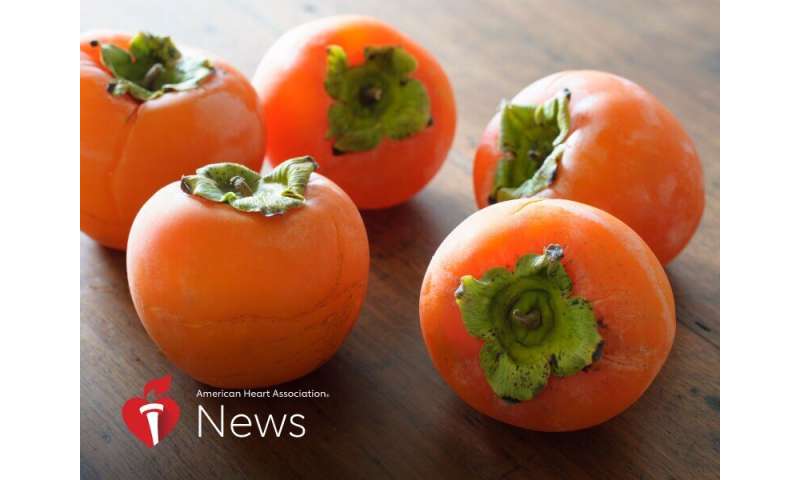Persimmons pack plenty of nutritional punch

Persimmons are low in calories and high in fiber—a combination that makes them a good choice for weight control. Their mix of antioxidants and nutrients—including vitamins A and C—makes them ideal for a healthy diet.
But for all of the benefits that come in these colorful, somewhat uncommon fruits, it may be their relative obscurity that makes them an even more valuable addition to a daily diet.
Typically in season from September through December, persimmons pair well with both sweet and savory foods—and they offer a nutritious alternative for people who may grow weary of the same everyday fruits, such as apples, oranges or bananas.
“They have different nutrient profiles and bioactives, and it just takes the boredom out of eating the same old, same old,” said Penny Kris-Etherton, a nutrition professor at Pennsylvania State University. “If you have some new fruits and vegetables to try, it makes it more exciting, and I think a lot easier to adhere to dietary recommendations.”
Sized somewhere between a plum and a peach, these autumn orange fruits typically resemble acorn-shaped tomatoes. They are known for their sweet taste when fully ripe, and they are typically eaten on their own as a snack or mixed into salads or breads.
Persimmons have been grown in China and Japan for 2,000 years, and there are hundreds of varieties worldwide, but they have been in the United States only since the late 1800s—and just two types are available commercially: Fuyu and Hachiya.
Fuyu are non-astringent, meaning they are sweeter and can be eaten fresh. The more bitter-tasting Hachiya are used more often in cooking. “They’ll suck the moisture out of your mouth, which is not very pleasant,” Kris-Etherton said. “The tartness goes away as the fruit ripens, but I don’t think it goes away completely.”
Persimmons pack a powerful mix of vitamins and minerals in a small serving. One persimmon contains 6 grams of fiber and 55% of the recommended daily intake of vitamin A, among other nutrients.
Their colorful appearance indicates the presence of beta-carotene, a carotenoid antioxidant that has been linked to a lower risk of heart disease. They also contain flavonoid antioxidants, which have been linked to better heart health and lower blood pressure, inflammation and “bad” LDL cholesterol.
A single fruit also contains more than 20% of the recommended daily intake of vitamin C, which has been shown to reduce inflammation and is linked to other health benefits from its antioxidant properties.
To make the most of the nutrition benefits that persimmons have to offer, Kris-Etherton said, it’s important to pair them with the right kinds of foods.
“We know that cooking fruits and vegetables makes the ingredients more bioavailable and if you eat them with other foods, it enhances the absorption of certain nutrients,” she said.
Depending on their ripeness, persimmons mix well with yogurt or oatmeal. Adding frozen persimmons to smoothies—with a handful of blueberries, perhaps—adds more nutrition to your recipe and presents an opportunity to enjoy the fruit even if it’s slightly out of season. Dried persimmons, which can be made in the oven or purchased online, also may make for a healthy snack or serve as an ingredient in homemade bread or muffins.
Even adding persimmons to a salad that includes avocados, Kris-Etherton said, will help with the absorption of carotenoids, a class of fat-soluble plant-based nutrients that can help health by protecting against cell damage.
Source: Read Full Article
